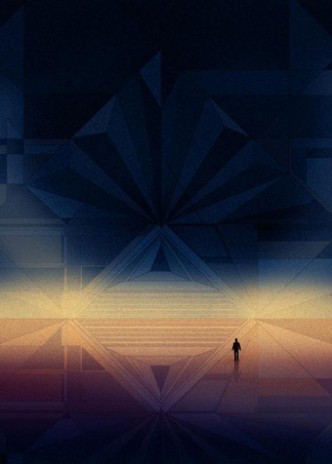Délai de traitement des retraits dans les casinos en ligne et physiques expliqués

Dans le vaste univers des paris en ligne, les joueurs s’interrogent souvent sur l’efficacité des méthodes de récupérations de gains. Plusieurs options s’offrent aux utilisateurs, chacune ayant ses propres spécificités et délais. Les rapports concernant la rapidité de ces transactions peuvent varier d’une plateforme à l’autre, et il est essentiel pour les parieurs de bien comprendre ces différences afin de faire des choix éclairés.
En outre, la comparaison entre les différentes offres disponibles permet non seulement de mettre en lumière les procédés utilisés, mais aussi d’identifier les meilleures alternatives pour maximiser leurs gains. Ces informations aident à évaluer l’efficacité générale des services proposés, favorisant ainsi une expérience utilisateur plus agréable.
Délai de traitement des gains

Lorsque les joueurs décident de retirer leurs bénéfices, divers aspects entrent en jeu pour déterminer la rapidité avec laquelle ces opérations sont exécutées. Il est fondamental de comprendre comment les différentes options disponibles peuvent influencer l’efficacité de ces processus.
Les principales méthodes de retrait incluent :
- Virements bancaires
- Portefeuilles électroniques
- Chèques
- Cryptomonnaies
Chaque option a ses propres caractéristiques et délais, impactant donc les attentes des utilisateurs. Par exemple, les portefeuilles électroniques offrent souvent une rapidité remarquable, tandis que les virements bancaires peuvent demander plus de temps en raison des vérifications de sécurité.
Un autre facteur à considérer est la vérification des comptes, une étape essentielle pour assurer la sécurité des transactions. Les casinos mettent fréquemment en place des procédures pour s’assurer de l’identité des joueurs, ce qui peut également influencer le timing des opérations. Ce processus, bien que nécessaire, peut parfois prolonger l’attente.
Pour améliorer l’expérience utilisateur, il est recommandé de choisir des méthodes de retrait qui correspondent à ses besoins. Une bonne compréhension des options disponibles et des attentes réalistes peuvent mener à une satisfaction accrue dans le processus de récupération des gains. La transparence des délais annoncés par les plateformes joue également un rôle clé dans l’expérience des utilisateurs.
Les facteurs influençant les délais de retrait
Plusieurs éléments peuvent avoir un impact sur les attentes des joueurs lors des demandes de retrait. Tout d’abord, la méthode sélectionnée pour retirer des fonds joue un rôle fondamental. Certaines options sont plus rapides que d’autres, et les utilisateurs doivent en tenir compte lors de leur choix.
De plus, les rapports entre les casinos et leurs partenaires financiers peuvent également affecter la durée des opérations. Une collaboration efficace peut entraîner une accélération des processus, tandis qu’un manque de communication peut provoquer des délais imprévus.
Il est également important de prendre en compte la vérification d’identité, qui peut varier en durée d’un utilisateur à l’autre. Un profil complet et correctement soumis peut faciliter les opérations, alors qu’un dossier incomplet pourrait retarder le mouvement des fonds.
Enfin, les périodes de forte activité, comme les vacances ou des événements spéciaux, peuvent influencer la rapidité des transactions. Les joueurs doivent donc considérer ces facteurs pour mieux évaluer les temps d’attente potentiels.
Les différences de traitement selon les méthodes de paiement
Les options offertes par les établissements de jeu varient considérablement, influençant directement les attentes des joueurs. Chaque méthode de paiement possède ses propres caractéristiques, ce qui peut engendrer des rapports différents en matière de rapidité et de fiabilité. Par exemple, les portefeuilles électroniques sont souvent prisés pour leur célérité, permettant des déplacements de fonds quasi instantanés.
En revanche, les transferts bancaires, bien que sécurisés, peuvent nécessiter un temps d’attente plus long, laissant certains joueurs dans l’incertitude. De plus, les cartes de crédit ou de débit, bien que pratiques, peuvent également engendrer des délais sensiblement plus élevés selon les établissements.
Il est donc essentiel pour les utilisateurs de bien se renseigner sur les modalités de chaque option avant de faire leur choix. Prendre en compte ces divers aspects permet d’ajuster ses attentes et de profiter d’une expérience plus fluide et agréable. Chaque méthode présente des avantages et des inconvénients, rendant l’information cruciale pour des décisions éclairées.
Comment suivre l’état de votre retrait en temps réel
Pour rester informé sur votre demande de retrait, il existe plusieurs options disponibles. Suivre l’état de votre retrait peut réduire vos attentes et vous apporter une tranquillité d’esprit. Voici quelques méthodes pour y parvenir :
| Méthode | Description |
|---|---|
| Plateforme de casino | Consultez votre compte joueur ; la plupart des plateformes offrent un espace où vous pouvez voir le statut de vos demandes. |
| Notifications par e-mail | Vérifiez vos courriels : vous devriez recevoir des rapports sur les différentes étapes de votre demande. |
| Assistance clientèle | Contactez le service client pour des informations personnalisées afin de connaître l’avancement de votre retrait. |
Chaque option vous donne un aperçu clair de ce qui se passe et vous aide à gérer vos attentes. Pour ceux qui cherchent des alternatives rapides, envisagez un casino retrait instantané pour des transactions plus efficaces.
Que faire en cas de retard dans le traitement de votre retrait
Lorsque vous constatez un retard dans le transfert de vos gains, il est essentiel de garder votre calme et d’explorer les options disponibles. Premièrement, vérifiez les délais habituels indiqués par l’établissement pour avoir une idée claire des attentes.
Ensuite, contactez le service client pour exprimer vos préoccupations. Soyez précis et poli dans votre communication, en fournissant toutes les informations nécessaires pour faciliter leur recherche. Cela демонstre une certaine efficacité dans la gestion de votre demande.
Il est par ailleurs judicieux de vérifier votre compte personnel pour tout message ou notification pouvant expliquer le retard. Des détails comme une vérification supplémentaire ou des documents manquants peuvent affecter le processus.
Afin d’éviter de futurs désagréments, documentez vos sollicitations et leur évolution. Une bonne trace de votre correspondance peut s’avérer utile si la situation perdure. Restez informé sur les politiques de retrait pour mieux gérer vos attentes à l’avenir.
Questions-réponses :
Quels sont les délais typiques pour le traitement des retraits dans les casinos en ligne ?
Les délais de traitement des retraits dans les casinos en ligne varient généralement en fonction de plusieurs facteurs, tels que la méthode de retrait choisie et la politique spécifique du casino. En règle générale, les délais peuvent aller de 24 heures pour les portefeuilles électroniques à plusieurs jours ouvrables pour les virements bancaires. Par exemple, les retraits via PayPal ou Skrill sont souvent traités plus rapidement, tandis que les retraits par chèque peuvent prendre jusqu’à une ou deux semaines.
Pourquoi y a-t-il des différences de délais de traitement entre les méthodes de retrait ?
Les différences de délais de traitement entre les méthodes de retrait sont principalement dues aux processus internes et aux intermédiaires impliqués. Les portefeuilles électroniques agissent généralement comme des intermédiaires rapides, permettant un transfert instantané des fonds. En revanche, les virements bancaires impliquent plusieurs étapes, y compris la vérification par les banques, ce qui peut ralentir le processus. De plus, chaque casino a ses propres protocoles et peut necessiter un certain délai pour vérifier les demandes de retrait afin d’assurer la sécurité des transactions.
Quels facteurs peuvent retarder un retrait dans un casino en ligne ?
Plusieurs facteurs peuvent entraîner des retards dans le traitement des retraits. Tout d’abord, des vérifications de sécurité supplémentaires peuvent être nécessaires si le casino suspecte une activité frauduleuse. De plus, des problèmes techniques, comme des temps d’arrêt sur la plateforme ou des pannes de serveur, peuvent également affecter la rapidité des transactions. Il est également possible que le joueur ait besoin de fournir des documents supplémentaires pour valider son identité, ce qui peut prolonger le processus.
Que faire en cas de retard dans le traitement d’un retrait ?
Si vous rencontrez un retard dans le traitement de votre retrait, la première étape consiste à vérifier l’état de votre demande dans votre compte joueur. Si tout semble en ordre, il est conseillé de contacter le service client du casino pour demander des éclaircissements. Assurez-vous de fournir tous les détails pertinents, tels que la méthode de retrait utilisée et la date de la demande. Le support client pourra alors vous donner des informations précises sur la situation et vous aider à résoudre le problème si nécessaire.



